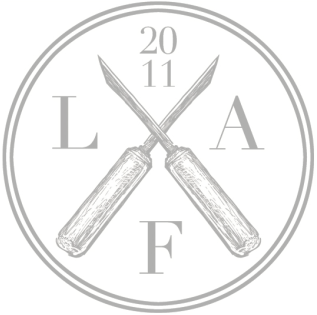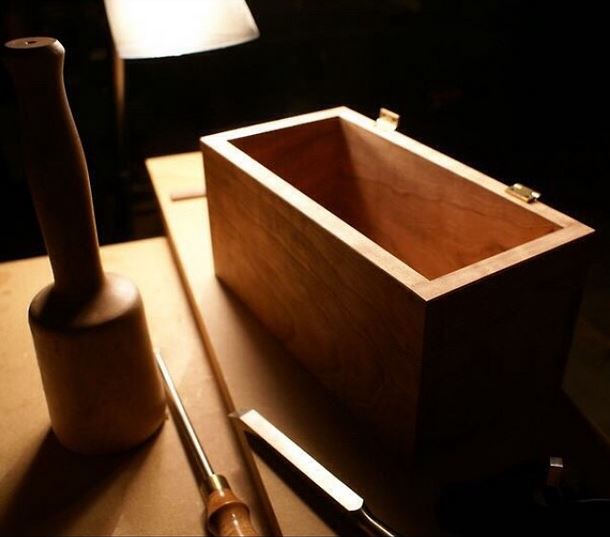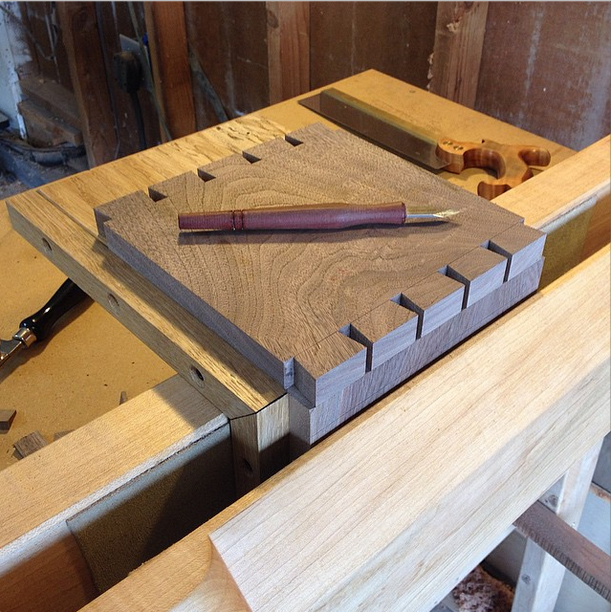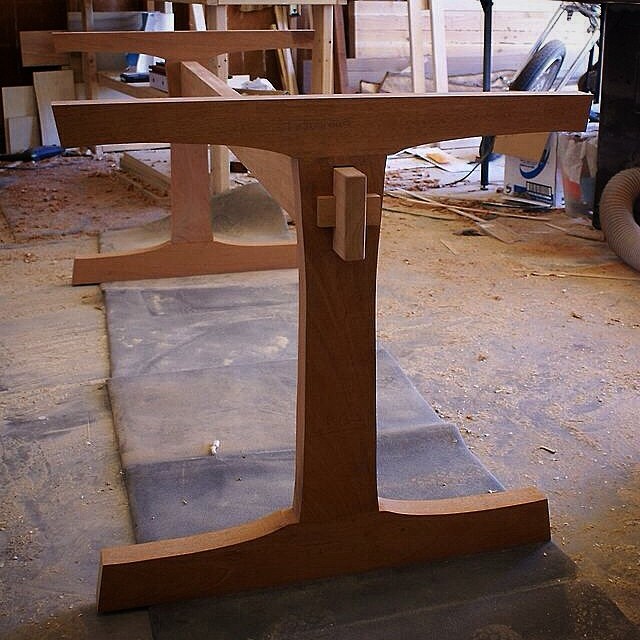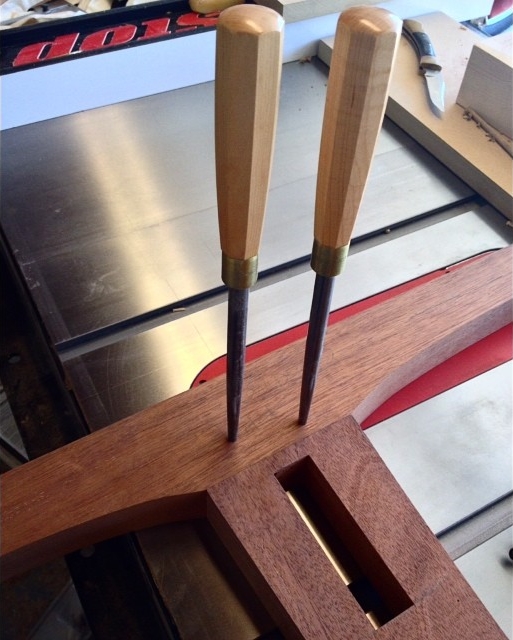Here’s my progress so far on my Traveling Anarchist’s Tool Chest. I got a very good deal on some wide Sapele so I decided to go with that. It’s starting to become one of my favorite woods. It stays dead flat, saws beautifully, and responds to the chisel very well. The interlocked grain, while a bit difficult to plane, I think will prove to be worth the effort in the long run. The large widths you can find it in are nice too!
For the most part I lifted the dimensions from Chris Schwarz’s tool chest. I adjusted the height slightly by adding two inches. The case is 38” long, 16” tall, and 18” deep. He posted this drawing and I think the dimensions, proportions, and functionality are great.
Here I've squared up the boards and taken them through the dovetail process.
Here is how I set the depth of cut on my tongue & groove plane. Place two strips of paper on the edge of the board. Rest the sole of the plane on the paper leaving a gap where the blade projects. Rest the blade on the bare wood. Tighten the lever cap. This leaves a 0.003” depth of cut – a good compromise between getting the work done and taking a fine shaving that will leave a nice shoulder line. Here’s a video of the plane in action. After planing the edges of the board overhang the chest carcass by about 1/8" - they are planed flush after install.
After that three wear strips are installed. They keep the bottom of the chest from being damaged. Much easier to replace one of these strips than a bottom board. I planed a nice chamfer on the edges in case the chest gets dragged over anything – that should help negate some of the damage.
A 50° frog and a high carbon blade have left a beautiful surface on this Sapele. Ron Brese told me that high carbon blades always perform better on ribbon striped stuff. He said A2 tool steel doesn’t like the changes in density present in the grain of boards like this. That’s why most people have trouble planing this kind of wood. Planing the bottom boards flush took a bit longer than I anticipated. In the second photo I set up a few “spring clamps”. These little bits of wood apply outward pressure so the plane can take a nice shaving. In the last photo I have the chest ready for moldings to be applied.
Until next time!
